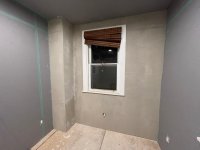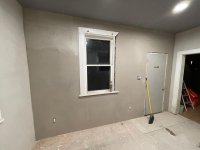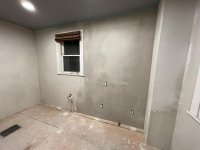Hey All,
Learning to plaster in the US, very little info about the process left in the us (everything is drywall/mud), most of my info is coming from UK plasterers and the info is not always 1-to-1 with the materials I have access to here.
Just started my first job a few days ago and noticed that while I could easily get my stainless/plastic tools clean, my aluminum hawk was really getting built up with the base coat I was applying (plaster with lots of adhesive and sand).
Additionally, while I could get buckets mostly clean, it was tough to get them totally cleaned when the last bit of each batch cured in the bucket (because my application is really slow at this point).
I know that dirty buckets/tools/water can cause plaster to set unpredictably, but how clean does everything really need to be?
Also, do you have different sets of tools for different materials? Like a hawk you use just for base coat/rendering (lots of aggregate) and another for smooth plaster?
Thanks!
Learning to plaster in the US, very little info about the process left in the us (everything is drywall/mud), most of my info is coming from UK plasterers and the info is not always 1-to-1 with the materials I have access to here.
Just started my first job a few days ago and noticed that while I could easily get my stainless/plastic tools clean, my aluminum hawk was really getting built up with the base coat I was applying (plaster with lots of adhesive and sand).
Additionally, while I could get buckets mostly clean, it was tough to get them totally cleaned when the last bit of each batch cured in the bucket (because my application is really slow at this point).
I know that dirty buckets/tools/water can cause plaster to set unpredictably, but how clean does everything really need to be?
Also, do you have different sets of tools for different materials? Like a hawk you use just for base coat/rendering (lots of aggregate) and another for smooth plaster?
Thanks!





